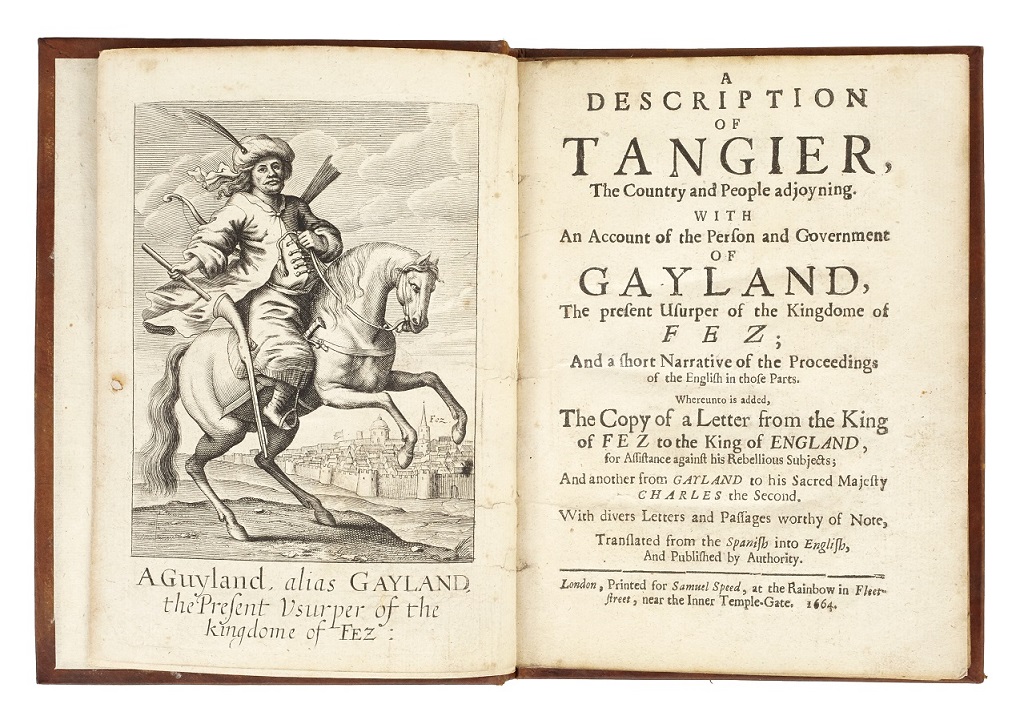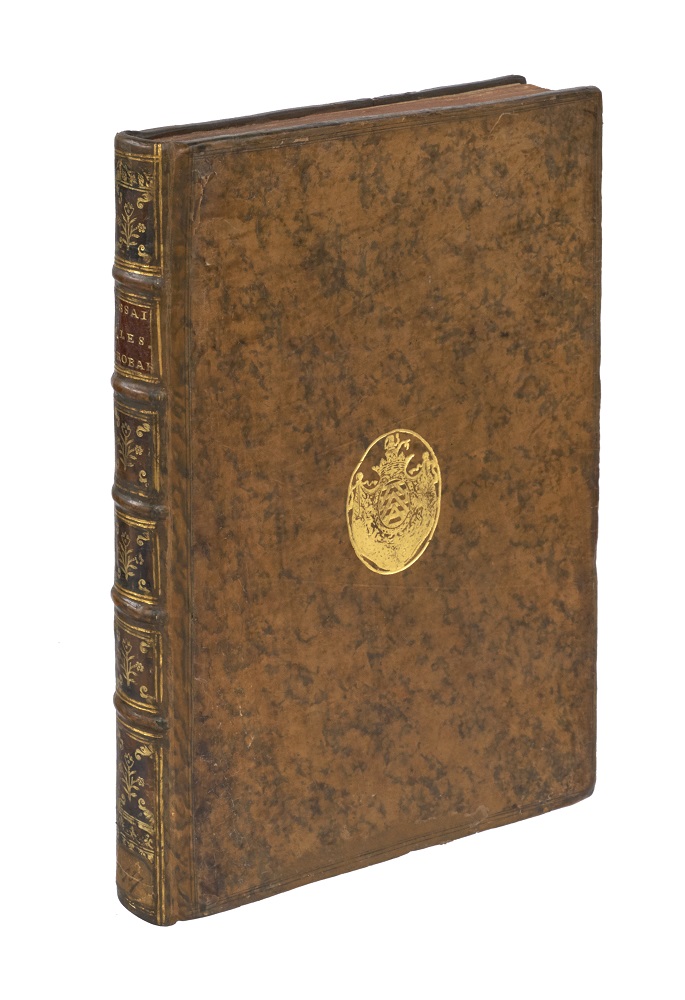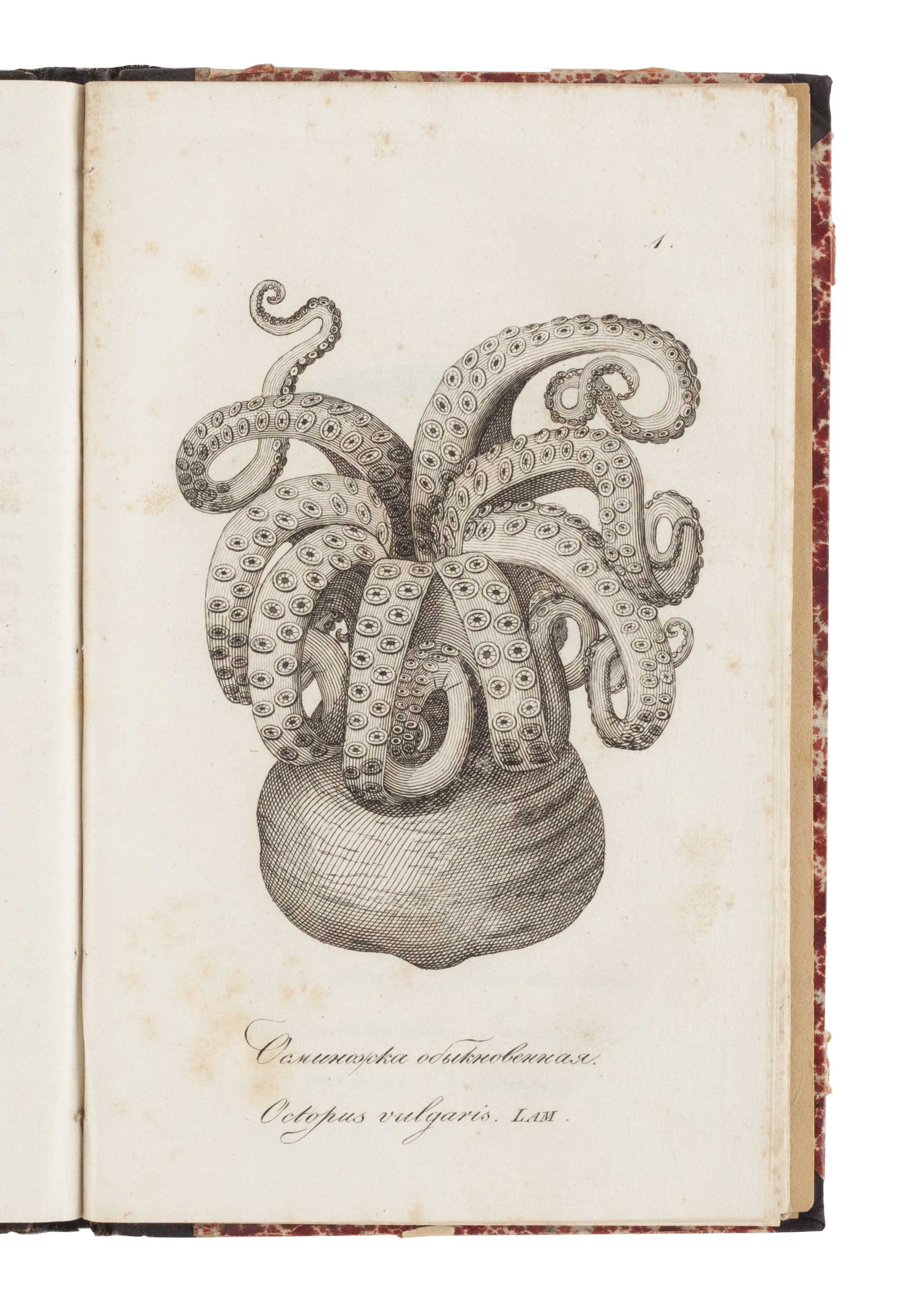
THE ENGLISH IN MOROCCO
[TANGIER.]
A Description of Tangier, the Country and People adjoyning. With an account of the person and government of Gayland, the present usurper of the kingdome of Fez; and a short narrative of the proceedings of the English in those parts. Whereunto is added, the copy of a letter from the king of Fez to the king of England, for assistance against his rebellious subjects; and another from Gayland to his sacred majesty Charles the Second. With divers letters and passages worthy of note, translated from the Spanish into English, and published by authority.
London, for Samuel Speed, 1664.
4to, pp. [8], 84; with engraved portrait to p. [2], ‘A Guyland, alias Gayland, the present usurper of the kingdome of Fez’; portrait neatly backed, quire A reinforced in gutter, a very few small spots and marks, last page slightly dusty; very good in modern calf, spine in compartments; very light wear to extremities.

Added to your basket:
A Description of Tangier, the Country and People adjoyning. With an account of the person and government of Gayland, the present usurper of the kingdome of Fez; and a short narrative of the proceedings of the English in those parts. Whereunto is added, the copy of a letter from the king of Fez to the king of England, for assistance against his rebellious subjects; and another from Gayland to his sacred majesty Charles the Second. With divers letters and passages worthy of note, translated from the Spanish into English, and published by authority.
Scarce first edition of this entertaining account of Tangier, in north-western Morocco, during the English occupation of the city, which had begun in 1661 following Charles II’s marriage to Catherine of Braganza, and which would come to an end in 1684.
Described by the editor in his preface as ‘outlandish’, the work is a delightful mix of fact and fiction, and the earliest item on Tangier recorded on ESTC, besides a pamphlet entitled A brief relation of the present state of Tangier which appeared in the same year. It opens with a striking portrait of the Moroccan warlord Khadir Ghaïlan (known to English-speakers as Gayland) depicting him on horseback, heavily armed, before the walled city of Fez. A description of Tangier was published in the immediate aftermath of Gayland’s victory over the English at the Battle of Tangier, in May 1664, at which the Governor Andrew Rutherford, 1st Earl of Teviot, was killed in an ambush, together with 400 men of his garrison. In spite of these unpropitious circumstances, the editor clearly had hopes for the English Moroccan foothold, writing in the preface ‘here is set down the great passage to the wealth of Affrica’.
Following a brief overview of Tangier, the text turns to Gayland (who is compared to Cromwell), discussing his wealth, military strength and tactics, and his court and policies. A history of the English occupation of the city follows, including copies of correspondence between Gayland, Teviot and Charles II. A chapter on ‘the qualities’ of the native population, ‘good and bad’, is followed by a description of the kingdom of Fez more generally, encompassing its climate, produce, fauna, customs (including clothing, justice, marriage, death etc.), schools, and even its fortune-tellers.
ESTC R12756 (recording four holding libraries in the UK and six in the US).

